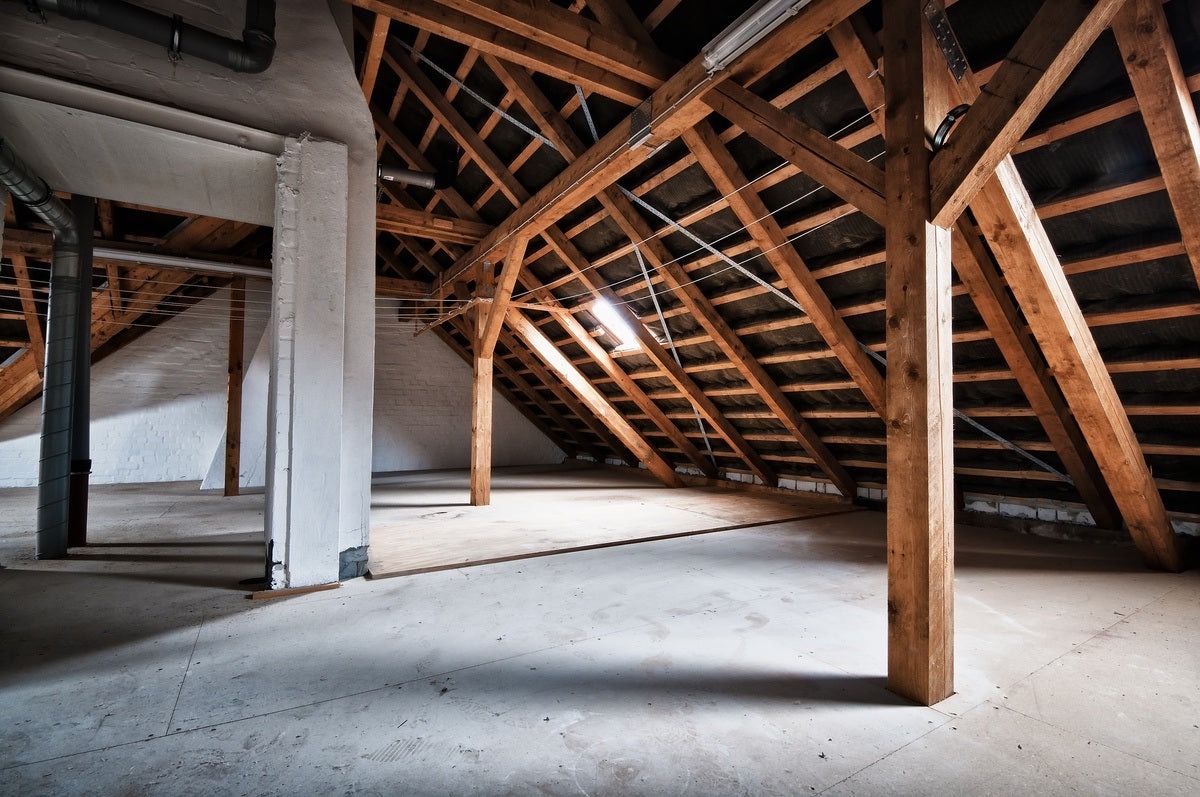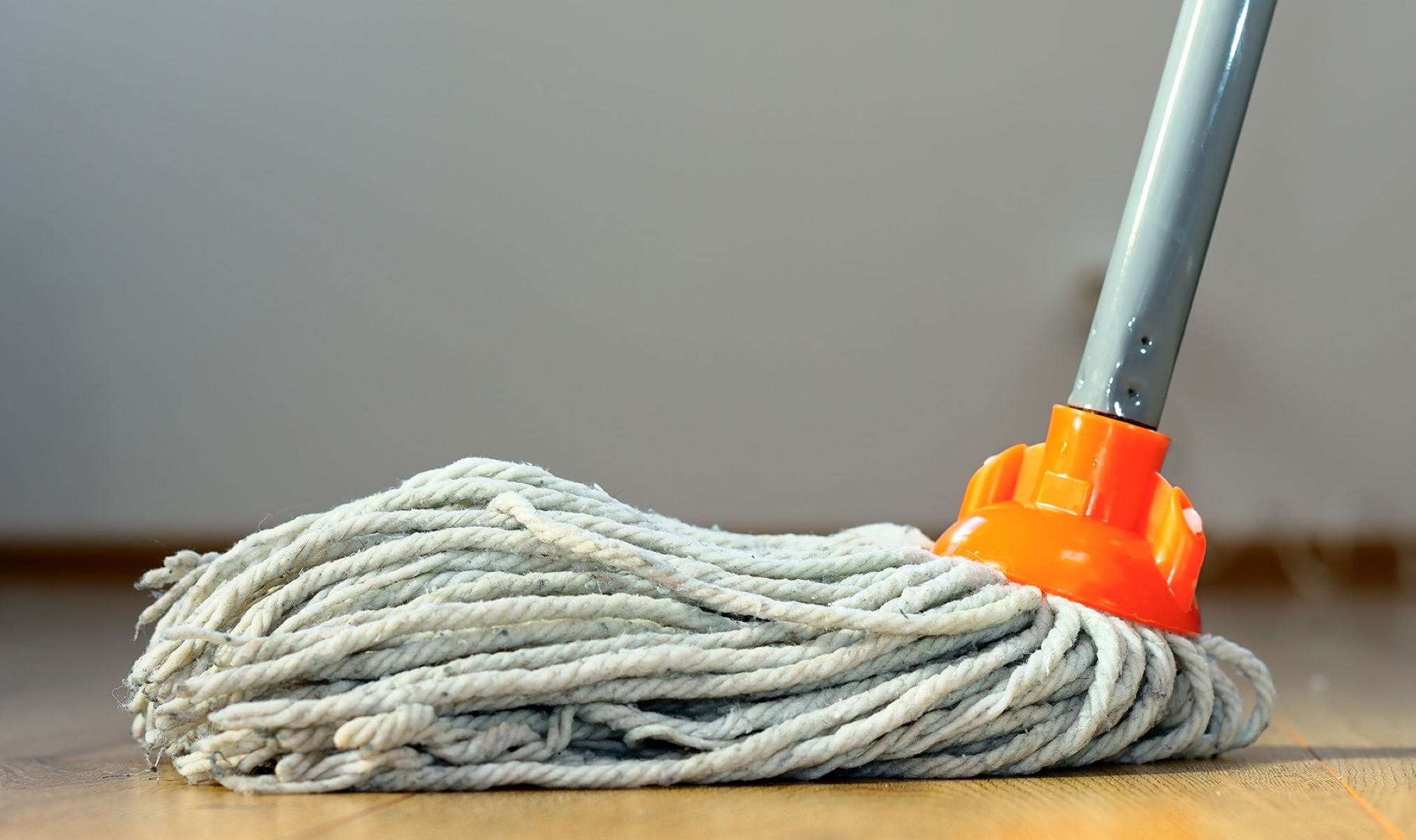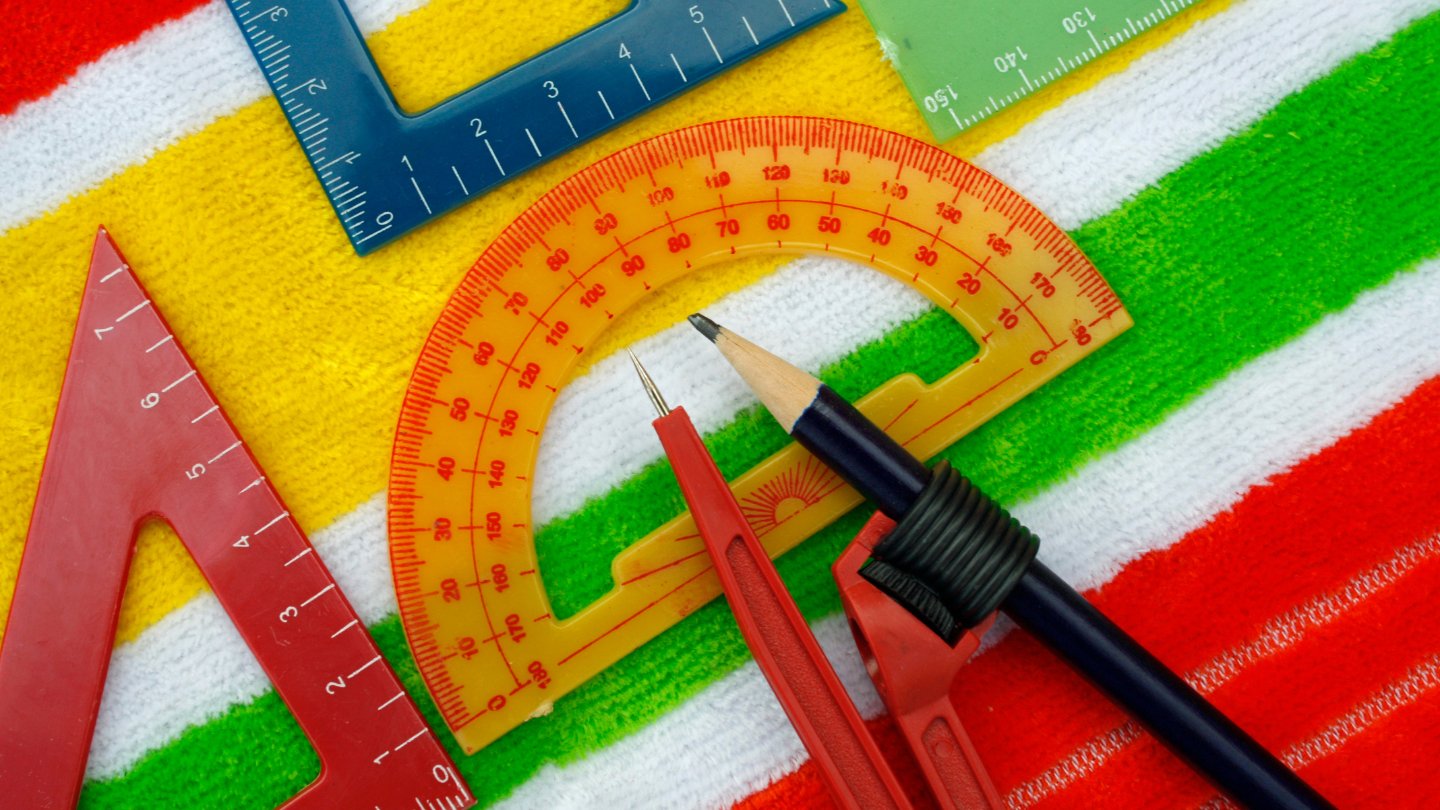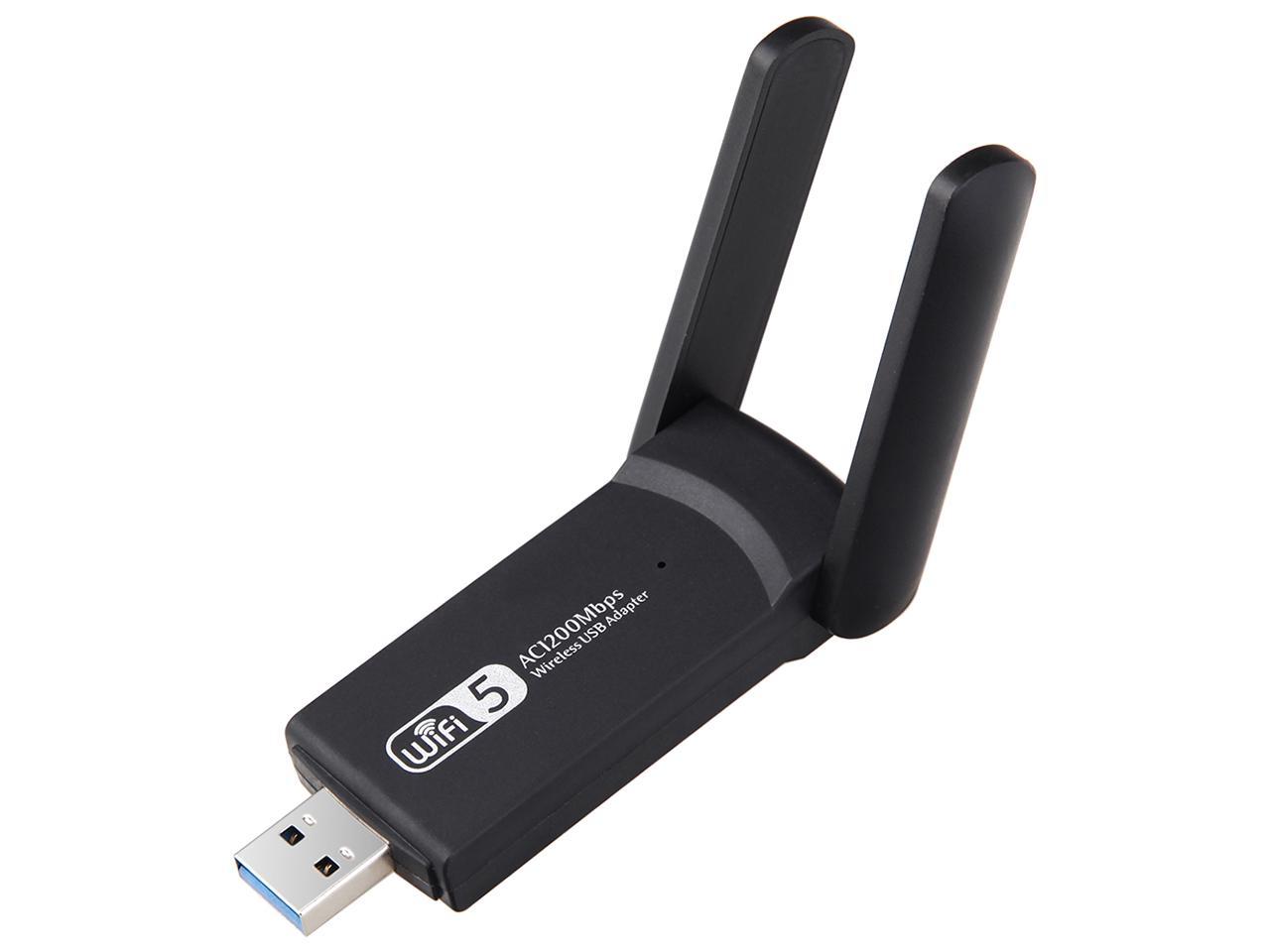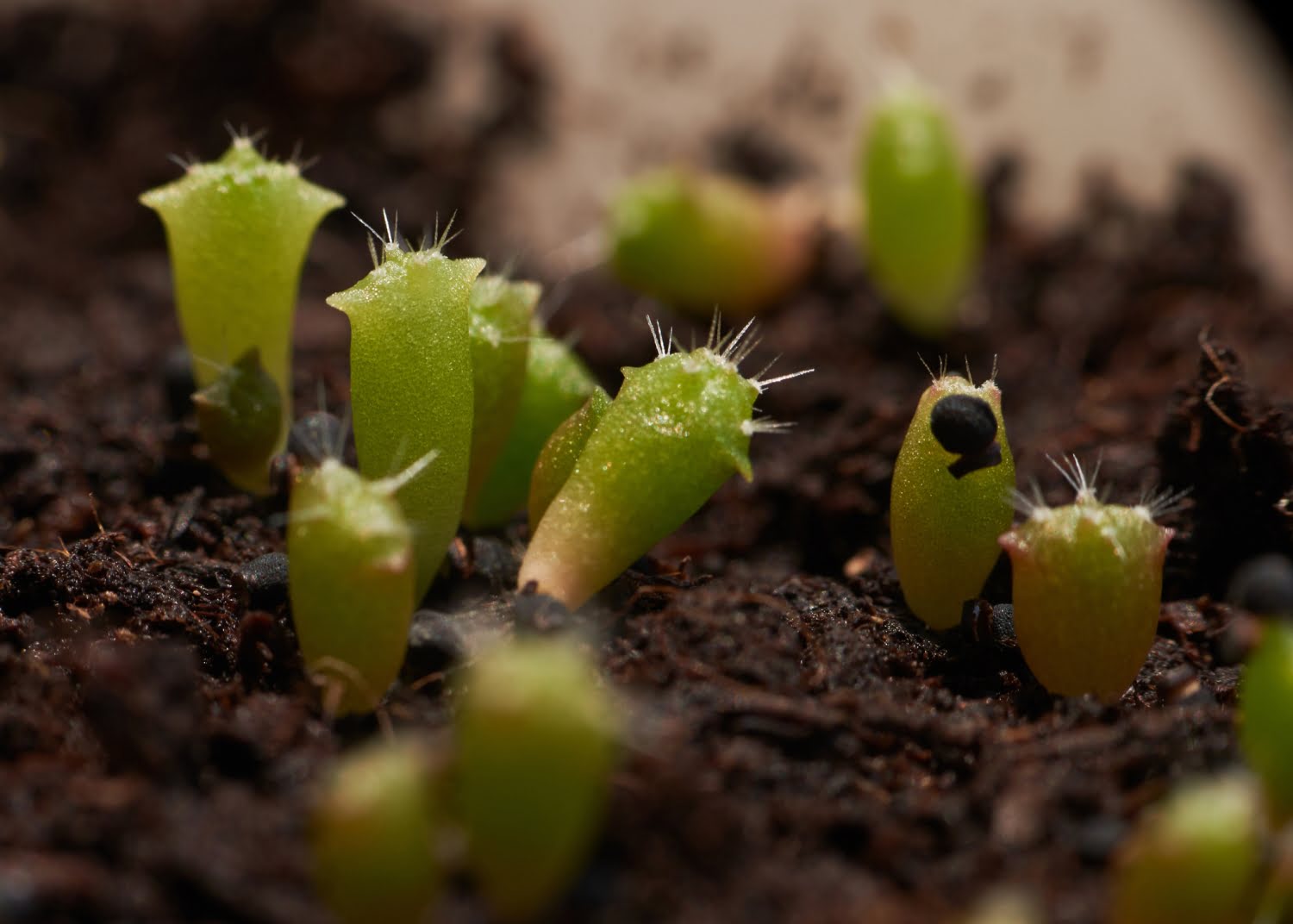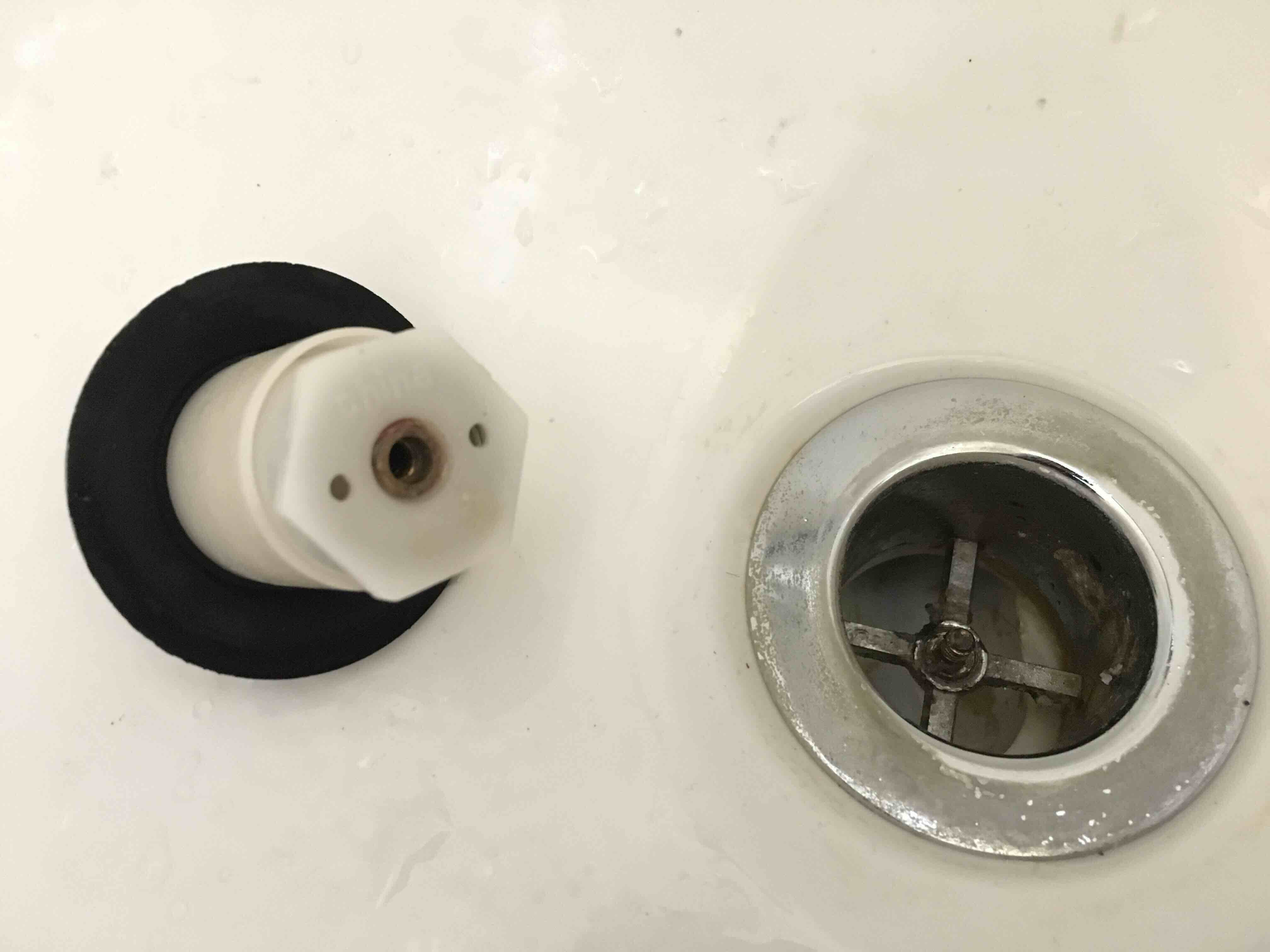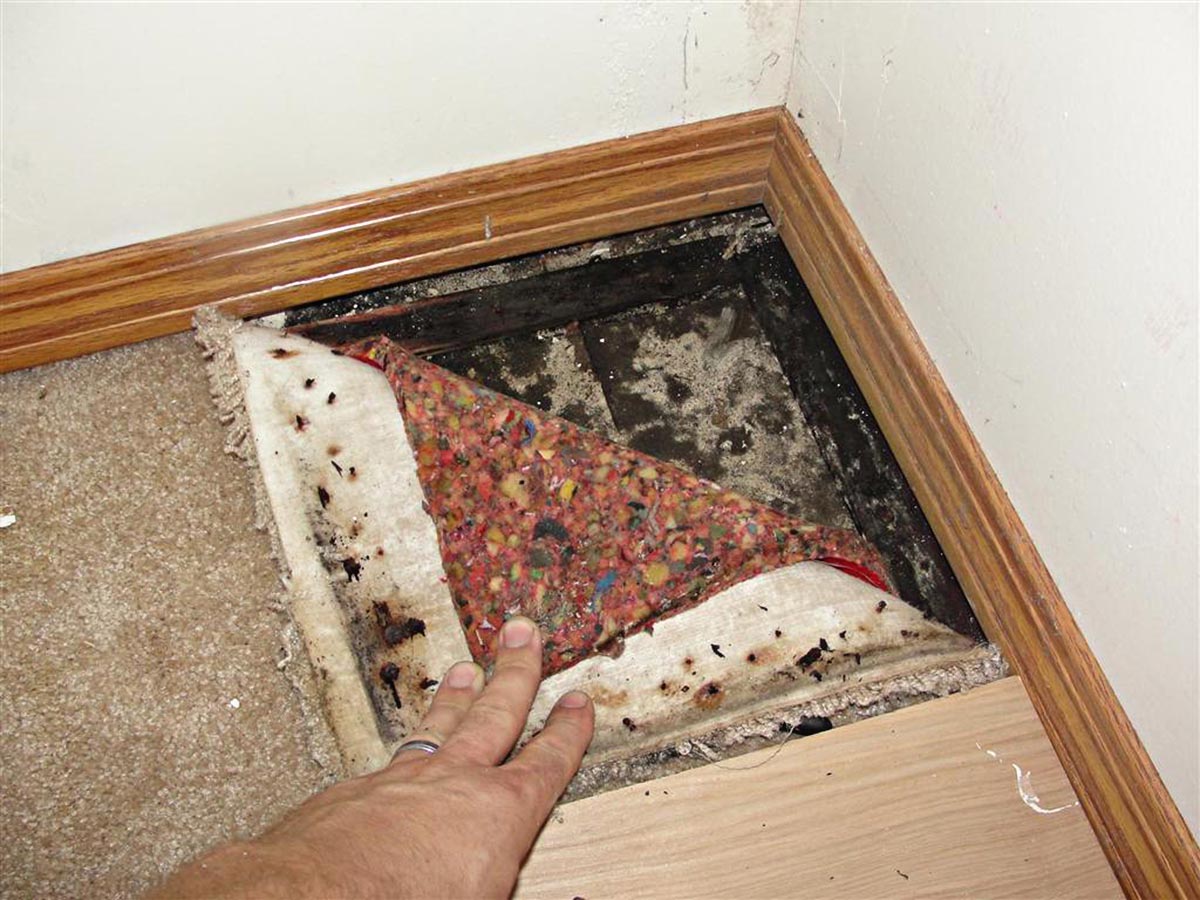Home>Furniture>Bedroom Furniture>What Does A Bed Bug Look Like
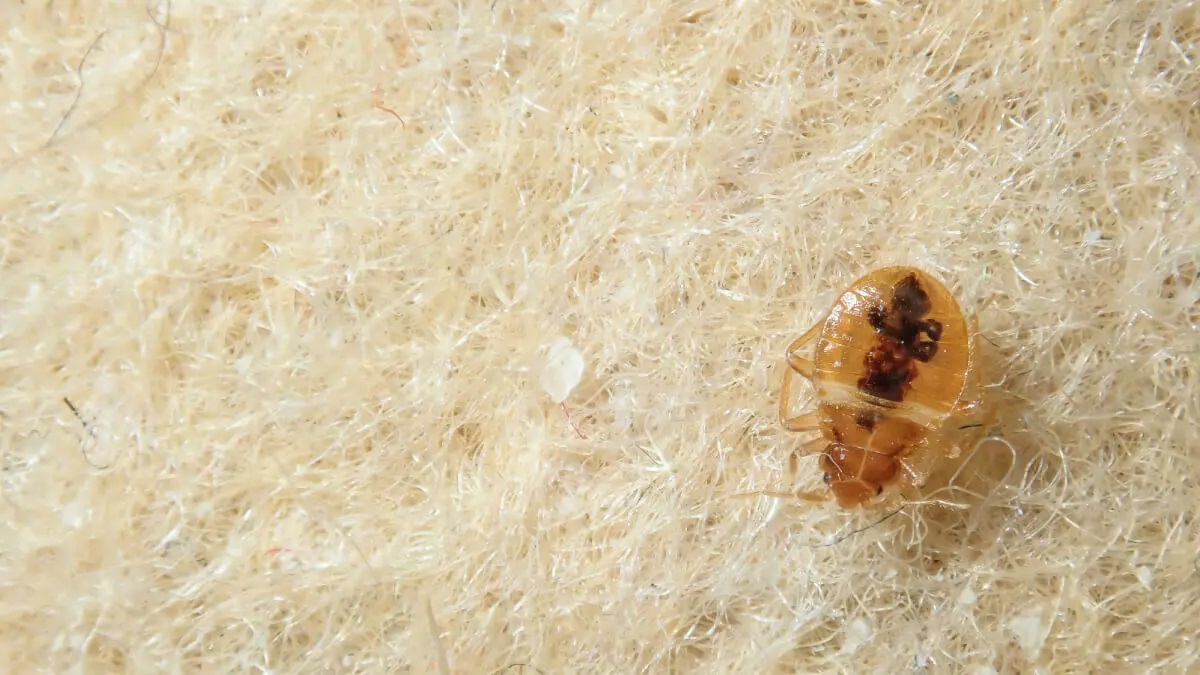

Bedroom Furniture
What Does A Bed Bug Look Like
Modified: October 28, 2024
Wondering what a bed bug looks like? Get a clear picture of these pests and learn how to identify them. Find out more at [website name] about bedroom furniture.
(Many of the links in this article redirect to a specific reviewed product. Your purchase of these products through affiliate links helps to generate commission for Storables.com, at no extra cost. Learn more)
Introduction
Bed bugs are small insects that have plagued humans for centuries. These blood-sucking pests feed on human blood while we sleep, causing itchy bites and potential infestations in our homes. Understanding what bed bugs look like is crucial for early detection and effective pest control.
In this article, we will delve into the physical characteristics of bed bugs, including their size, color, and anatomy. We will also explore the different life stages of bed bugs and common misidentifications that can lead to confusion. By the end of this article, you will have a clear understanding of how to identify bed bugs and distinguish them from other insects.
Without further ado, let’s dive into the fascinating world of bed bug identification.
Key Takeaways:
- Understanding the physical characteristics of bed bugs, such as their size, color, and body structure, is crucial for early detection and effective pest control. Recognizing the differences between bed bugs and other insects can prevent misidentifications and ensure proper treatment.
- Bed bugs go through various life stages, from eggs to nymphs and finally to adults. Recognizing these stages and their characteristics is important for comprehensive pest management. Seeking professional assistance for accurate identification and treatment is recommended for effective eradication.
Read more: What Does A Dead Bed Bug Look Like
Physical Characteristics of Bed Bugs
Knowing the physical characteristics of bed bugs will help you identify them with ease. Let’s explore their size, color, and anatomy.
Size and Shape
Bed bugs are small, flat, and oval-shaped insects. They typically measure between 4 to 5 millimeters in length, which is roughly the size of an apple seed. However, their size can vary depending on their age and whether they have recently fed on blood.
Color and Appearance
Adult bed bugs have a reddish-brown color, similar to that of a rusty penny. This hue helps them blend in with furniture, bedding, and other dark areas where they hide. Their bodies are smooth and shiny, with a segmented abdomen that expands after feeding.
Anatomy and Body Structure
Bed bugs have a segmented body consisting of a head, thorax, and abdomen. They have six legs, which are well-adapted for crawling and clinging to different surfaces. Their head features a pair of prominent compound eyes and a sharp beak-like structure called a proboscis, used for piercing the skin and extracting blood.
Additionally, bed bugs have two small antennae on their head, which they use to detect heat and carbon dioxide emitted by their human hosts. These sensory organs help them locate their prey in the dark.
Bed bugs also have vestigial wings that are not functional, making them incapable of flying or jumping. However, they are excellent climbers, capable of traversing various surfaces, including walls, furniture, and even ceilings.
Now that we have covered the physical characteristics of bed bugs, let’s move on to understanding their life stages and how they undergo metamorphosis.
Read more: What Bed Bug Bites Look Like
Size and Shape
The size and shape of bed bugs are important identifiers when it comes to distinguishing them from other insects. Understanding their dimensions can significantly aid in their detection and control.
Adult bed bugs typically measure between 4 to 5 millimeters in length, which is roughly the size of an apple seed. Their bodies are flattened and oval-shaped, allowing them to squeeze into tight cracks and crevices, as well as hide among bedding, furniture, and other household items.
While adult bed bugs are noticeable to the naked eye, their young, called nymphs, are significantly smaller. Nymphs range in size from 1 to 4 millimeters, depending on their developmental stage. The newly hatched nymphs are almost translucent and nearly invisible to the naked eye.
It’s worth noting that bed bugs’ size can vary depending on factors such as their age and whether they have recently fed on blood. After feeding, their bodies become plump and engorged, increasing their size and altering their shape. This can make it more challenging to identify them, as their appearance may change due to their blood meal.
Despite their small size, bed bugs are expert hitchhikers and can easily be transported from one location to another. Their ability to hide in tiny cracks and crevices, combined with their mobility, makes them extremely resilient and capable of infesting new environments.
When conducting a visual inspection for bed bugs, it’s crucial to keep their size and shape in mind. Look for these tiny oval-shaped insects and pay attention to any sudden movements or signs of shedding, such as bed bug exoskeletons.
Now that we have discussed the size and shape of bed bugs, let’s move on to explore their color and appearance.
Color and Appearance
The color and appearance of bed bugs play a significant role in their identification. Understanding their distinct coloring can help distinguish them from other insects and aid in effective pest management.
Adult bed bugs typically have a reddish-brown color, resembling the appearance of a rusty penny. This hue serves as a camouflage, allowing them to blend into their surroundings, such as bedding, furniture, and cracks in walls or floors.
While the reddish-brown color is characteristic of adult bed bugs, it’s important to note that their color can change depending on various factors. After feeding on blood, their bodies become engorged and may take on a darker, more purplish hue.
On the other hand, newly hatched bed bug nymphs are almost translucent and appear lighter in color. As they mature and feed on blood, their color intensifies and becomes closer to the reddish-brown shade of adult bed bugs.
In addition to their distinctive color, bed bugs have a sleek and flattened appearance, allowing them to navigate through tight spaces. Their bodies are also segmented and covered in a shiny exoskeleton. This smooth texture aids in their ability to move quickly and hide in various cracks and crevices.
When conducting a visual inspection for bed bugs, carefully observe any signs of their color and appearance. Look for these reddish-brown insects, keeping in mind their flattened and segmented bodies. Also, be on the lookout for any shed exoskeletons, as bed bugs periodically molt throughout their life cycle.
Now that we have discussed the color and appearance of bed bugs, let’s delve into their anatomy and body structure.
Anatomy and Body Structure
The anatomy and body structure of bed bugs are fascinating and contribute to their ability to survive and thrive in various environments. Understanding their physical features can aid in their identification and prevention.
Bed bugs have a segmented body consisting of three main parts: the head, thorax, and abdomen. This distinct body structure allows them to maneuver through narrow spaces, making it easier for them to hide in cracks and crevices.
The head of a bed bug contains two large compound eyes, which are dark in color. These compound eyes provide bed bugs with a wide field of vision, allowing them to detect movement and potential prey.
Located beneath their eyes, bed bugs have a pair of short antennae. These antennae are sensory organs that help them detect heat and chemical signals. By picking up on the heat and carbon dioxide emitted by humans, bed bugs can easily locate their hosts.
At the front of the head, bed bugs have a long, tubular mouthpart known as a proboscis. This specialized structure allows them to pierce the skin and feed on blood. The proboscis is equipped with a pair of sharp stylets used for puncturing the skin and a retractable feeding tube through which blood is extracted.
The thorax of a bed bug is located behind the head and connects to the abdomen. It contains three pairs of jointed legs, one pair on each side. These strong and agile legs enable bed bugs to crawl and climb various surfaces, including walls, furniture, and even ceilings.
The abdomen of a bed bug is where many vital organs are located, such as the digestive, reproductive, and circulatory systems. It is also the part of their body that expands significantly after feeding on blood. The abdomen appears to have nine visible segments, allowing for flexibility in movement.
Despite having wing pads, bed bugs do not have functional wings and are incapable of flying. Instead, they rely on their ability to crawl and hitchhike for transportation.
Now that we have explored the anatomy and body structure of bed bugs, let’s move on to understanding their life stages and how they undergo metamorphosis.
Life Stages of Bed Bugs
Bed bugs go through a process of metamorphosis, meaning they undergo various developmental stages before reaching adulthood. Understanding these life stages is crucial for effective bed bug identification and control.
Read more: What Do Bed Bugs Look Like In A Mattress
Eggs
The life cycle of a bed bug begins with an egg. Female bed bugs can lay hundreds of eggs throughout their lifetime, typically depositing them in hidden crevices and cracks near their food source, which is human blood.
Bed bug eggs are tiny, measuring about 1mm in length. They are white and oval-shaped, resembling a grain of rice. Although they are barely visible to the naked eye, inspecting potential hiding spots such as mattress seams, furniture joints, and baseboards can help uncover these eggs.
Nymphs
Once the eggs hatch, nymphs emerge. Nymphs are the juvenile stage of bed bugs, and they resemble mini versions of adult bed bugs. However, they are smaller and lighter in color.
Nymphs go through several molting stages, shedding their exoskeletons as they grow. With each molt, their size increases, and they develop more distinct features of adult bed bugs, such as the reddish-brown color and segmented body.
During the nymph stage, bed bugs require regular blood meals to fuel their growth and development. Nymphs can go through five instars, or developmental stages, before reaching adulthood. Each instar is characterized by a molt, as the nymph sheds its exoskeleton and emerges with a larger body size.
Adults
Once the nymph has completed its final molt, it reaches the adult stage. Adult bed bugs are fully developed and capable of reproducing.
Adult bed bugs have a reddish-brown color and an oval-shaped body. They are approximately 4 to 5 millimeters in length, similar in size to an apple seed. Their bodies are flat, allowing them to squeeze into small hiding spots and go unnoticed.
Adult bed bugs require regular blood meals to reproduce and sustain themselves. They can survive for several months without feeding, making them resilient and challenging to eradicate.
By understanding the life stages of bed bugs, you can identify the different forms they take as they grow and develop. This knowledge is essential for early detection, treatment, and effective pest control.
Next, we will discuss common misidentifications and the key differences between bed bugs and other insects.
Eggs
The first stage in the life cycle of a bed bug is the egg. Female bed bugs lay their eggs in hidden crevices and cracks near their food source, which is human blood. Understanding what bed bug eggs look like is essential for early detection and effective pest control.
Bed bug eggs are tiny, about 1 millimeter in length, and are barely visible to the naked eye. They are oval-shaped, resembling a grain of rice, and have a pearly-white color. The eggs are sticky and can easily adhere to surfaces, making them challenging to remove.
When a female bed bug lays her eggs, she typically deposits them in clusters of 10 to 50, although larger clusters can be found. Bed bugs prefer to lay their eggs in hidden areas near their harborage, such as mattress seams, furniture joints, baseboards, and cracks in walls or floors.
Because bed bug eggs are small and well-hidden, they can be challenging to spot. However, conducting a thorough inspection of potential hiding spots is crucial for detecting and eliminating an infestation. Use a flashlight and closely examine areas where bed bugs are known to hide, paying particular attention to cracks, crevices, and seams.
It’s important to note that bed bug eggs have a sticky surface, which allows them to adhere to surfaces and helps protect them from being easily dislodged. Their sticky nature also makes it challenging for insecticides to penetrate the eggshell, making eggs one of the most resilient and difficult stages of bed bugs to eliminate during treatment.
When dealing with a bed bug infestation, it’s crucial to address the eggs as part of the treatment process. Professional pest control companies have specialized techniques and knowledge to target and eliminate bed bug eggs effectively. DIY treatments may not always reach and eliminate all eggs, leading to potential re-infestation.
By understanding what bed bug eggs look like and where they are likely to be found, you can increase your chances of early detection and successful treatment. If you suspect a bed bug infestation, it is always recommended to consult with a professional pest control provider for effective eradication.
Next, we will discuss the nymph stage of bed bugs, where they undergo significant growth and development.
Read more: What Bugs Look Like Sesame Seeds
Nymphs
After hatching from the eggs, bed bugs enter the nymph stage of their life cycle. This stage is a significant part of their growth and development process, as they transform into adult bed bugs. Understanding the characteristics of bed bug nymphs is crucial for effective identification and control.
Nymphs are the juvenile form of bed bugs and resemble smaller versions of adult bed bugs. However, they have distinct differences in size and color. Nymphs are lighter in color compared to adults and undergo a series of molts as they grow.
During each molt, which is known as an instar, the nymph sheds its exoskeleton to accommodate its increasing size. It then emerges with a new exoskeleton that is slightly larger, allowing for further growth. Bed bugs go through five instar stages before reaching adulthood.
When nymphs first hatch, they are incredibly tiny, measuring about 1 to 1.5 millimeters in length. At this stage, they are almost translucent and may appear pale or whitish in color. As they feed on blood, their bodies gradually darken and take on a reddish-brown hue, similar to adult bed bugs.
As nymphs progress through each instar, their size increases and their color intensifies. The final nymph stage, also known as the fifth instar, closely resembles adult bed bugs in appearance and color.
Nymphs require blood meals to grow and molt into the next stage. They actively seek out their human hosts and usually feed during the night when their victims are asleep. Although nymphs are capable of biting and feeding on humans, their bites are typically less noticeable than those of adult bed bugs.
Identifying nymphs can be challenging due to their smaller size and ability to hide in narrow cracks and crevices. However, careful inspection of suspected infested areas, such as mattress seams, furniture joints, and baseboards, can help uncover their presence.
Dealing with bed bug nymphs requires thorough treatment to eliminate the infestation completely. Their small size and ability to hide in hard-to-reach places make it crucial to target all potential harborage areas during treatment.
By familiarizing yourself with the appearance and characteristics of bed bug nymphs, you can improve your ability to identify an infestation and take appropriate measures for control.
Next, we will discuss the final stage of the bed bug life cycle: the adult stage.
Adults
The final stage in the life cycle of bed bugs is the adult stage. At this stage, bed bugs have reached their full size and have the ability to reproduce. Understanding the characteristics of adult bed bugs is crucial for identification and effective pest control.
Adult bed bugs are typically 4 to 5 millimeters in length, roughly the size of an apple seed. They have an oval-shaped body with a flattened appearance, which allows them to hide in narrow crevices and cracks. Their bodies are reddish-brown in color, resembling the color of a rusty penny.
One of the distinctive features of adult bed bugs is their ability to feed on blood. When a bed bug is hungry, its body appears flat and elongated. However, after a blood meal, its body becomes engorged and plump. This change in appearance can make identifying fed bed bugs easier, as their bodies may appear darker and more swollen.
Adult bed bugs have well-developed legs, with six legs in total. These legs enable them to crawl and move across various surfaces, including fabrics, wooden furniture, and walls. Although bed bugs have wing pads, they are flightless insects and cannot fly.
The lifespan of an adult bed bug can vary depending on several factors, including temperature and availability of a blood meal. On average, adult bed bugs can live up to six to twelve months. However, under ideal conditions, they may survive for up to a year without feeding.
During adulthood, bed bugs continue to feed on human blood. They are attracted to sources of carbon dioxide and body heat emitted by their sleeping hosts. Typically, bed bugs feed during the night and retreat to their hiding places during the day.
Identifying adult bed bugs can be challenging due to their ability to hide in concealed areas and their small size. However, careful inspection of mattress seams, box springs, furniture joints, and cracks in floors and walls can reveal their presence.
Dealing with adult bed bugs requires a comprehensive approach, including professional pest control treatment. Bed bugs are resilient pests, and eliminating an infestation entirely requires targeting all stages of their life cycle, including adults.
By familiarizing yourself with the characteristics of adult bed bugs, you can improve your ability to detect an infestation, take prompt action, and seek professional assistance when necessary.
Next, we will discuss common misidentifications of bed bugs and how to differentiate them from other insects.
Common Misidentifications
Identifying bed bugs accurately is crucial for effective pest management. However, there are some common misidentifications that can lead to confusion and delay in addressing an infestation. Let’s explore some of the common insects that are often mistaken for bed bugs.
1. Carpet Beetles: Carpet beetles are small insects that can be mistaken for bed bugs due to their similar size and shape. However, there are notable differences in appearance. Carpet beetles have a more rounded and domed body compared to the flat and elongated shape of bed bugs. Additionally, carpet beetles have distinct patterns on their bodies, such as stripes or spots, while bed bugs have a solid color.
2. Booklice: Booklice are tiny insects that are commonly found in humid environments, such as libraries and bookstores. They are often mistaken for bed bug nymphs due to their small size and pale coloration. However, booklice do not bite humans and are not blood feeders like bed bugs. Additionally, booklice have soft bodies and lack the distinct shape and coloration of bed bugs.
3. Cockroach Nymphs: Cockroach nymphs can resemble bed bug nymphs due to their small size and similar coloration. However, there are notable differences in their body shape and structure. Cockroach nymphs have a more slender and elongated body compared to the flattened and oval-shaped body of bed bug nymphs. Additionally, cockroach nymphs have long antennae, while bed bug nymphs have shorter antennae.
4. Bat Bugs: Bat bugs are closely related to bed bugs and have a similar appearance. They are often mistaken for bed bugs, especially in environments where bats are present. The key distinction between bat bugs and bed bugs is the length of their fringe hairs on the pronotum (the region behind the head). Bat bugs have longer hairs that extend past the eyes, while bed bugs have shorter hairs.
5. Spider Beetles: Spider beetles are small, oval-shaped insects that can resemble bed bugs due to their size and coloration. However, spider beetles have a distinct humped appearance, unlike the flattened shape of bed bugs. Additionally, spider beetles have long antennae, while bed bugs have shorter antennae.
It is important to note that properly identifying bed bugs is crucial for implementing the appropriate treatment and control measures. If you are unsure about the presence of bed bugs or need assistance with identification, it is recommended to consult with a professional pest control provider for accurate assessment and guidance.
Now that we have discussed common misidentifications, let’s move on to explore the key differences between bed bugs and other insects.
Bed bugs are small, reddish-brown insects that are about the size of an apple seed. They have flat bodies and are often mistaken for ticks or small cockroaches. Look for them in mattress seams, bed frames, and other furniture.
Differences Between Bed Bugs and Other Insects
While there are some insects that can be mistaken for bed bugs, there are several key differences that can help you distinguish bed bugs from other insects. Understanding these differences is crucial for accurate identification and appropriate pest control measures. Let’s explore some of the key distinctions.
1. Body Shape: Bed bugs have a distinct body shape that is flat and oval-shaped. This body structure allows them to easily hide in cracks and crevices. In contrast, other insects like carpet beetles and cockroaches have more rounded or elongated body shapes.
2. Size: Bed bugs are small, measuring about 4 to 5 millimeters in length. While they can be visible to the naked eye, there are other insects, such as booklice, that are similar in size. However, bed bugs have a specific color, shape, and behavior that set them apart from other insects of similar size.
3. Color: Adult bed bugs have a reddish-brown color, resembling the appearance of a rusty penny. This color helps them blend into their surroundings. Other insects may have different colors or patterns, such as the striped or spotted appearance of carpet beetles.
4. Behavior: Bed bugs are blood feeders, meaning they require regular blood meals to survive. They are attracted to the carbon dioxide and heat emitted by humans, which helps them locate their hosts. Other insects, such as carpet beetles and booklice, do not feed on blood and have different feeding habits.
5. Biting Habits: Bed bugs are known for their bites, which can cause itchy red welts on the skin. The bites are usually found in clusters or in a linear pattern. Other insects, like carpet beetles or cockroaches, do not bite humans and therefore, do not cause similar skin reactions.
6. Life Cycle: Bed bugs have a distinct life cycle, going through various stages from eggs to nymphs and finally to adults. Understanding the different stages and their characteristics is vital for effective identification and control. Other insects may have different life cycles and undergo different developmental processes.
By paying attention to these key differences, you can improve your ability to accurately identify bed bugs and differentiate them from other insects. If you are unsure about the presence of bed bugs or need assistance with identification, it is always recommended to consult with a professional pest control provider for accurate assessment and guidance.
Next, we will conclude with a summary of the article and the importance of understanding bed bug identification.
Read more: How To Look For Bed Bugs On A Mattress
Similarities Between Bed Bugs and Other Insects
While there are several key differences that can help distinguish bed bugs from other insects, there are also some similarities that can make identification challenging. Understanding these shared characteristics is important for accurate identification and effective pest control. Let’s explore some of the similarities between bed bugs and other insects.
1. Size: Bed bugs, like many other insects, are small in size. They measure about 4 to 5 millimeters as adults, which is roughly the size of an apple seed. This similarity in size can make it difficult to differentiate bed bugs from other small insects without careful observation and examination.
2. Habitat: Bed bugs, like other insects, have specific habitats where they prefer to live. They are often found in indoor environments, particularly in areas where humans reside, such as homes, hotels, and dormitories. Other insects, such as cockroaches or carpet beetles, may also inhabit similar environments, making it important to thoroughly inspect potential harborage areas.
3. Mobility: Bed bugs, like many other insects, have the ability to crawl and move across different surfaces. They can crawl on walls, furniture, and even ceilings, which allows them to easily access new hiding spots. Other insects, such as carpet beetles or cockroaches, also have the ability to crawl and move around their surroundings.
4. Nuisance: Bed bugs, as well as other insects, can be a nuisance when they infest residential or commercial spaces. They can cause various problems, including bites, skin irritation, and psychological distress. Dealing with infestations of bed bugs or other insects requires prompt and effective pest control measures.
While there are similarities between bed bugs and other insects, it is important to focus on the distinguishing characteristics that set bed bugs apart. By understanding the specific features, behavior, and life cycle of bed bugs, you can improve your ability to accurately identify and address infestations.
If you are unsure about the presence of bed bugs or need assistance with identification, it is always recommended to consult with a professional pest control provider. They have the expertise and knowledge to accurately identify and effectively treat infestations of bed bugs or other insects.
Now, let’s conclude the article with a summary of the importance of understanding bed bug identification.
Conclusion
Understanding what bed bugs look like is crucial for early detection and effective pest control. By familiarizing yourself with their physical characteristics, such as their size, color, and body structure, you can improve your ability to identify these pests and differentiate them from other insects.
Bed bugs are small, flat, oval-shaped insects that measure about 4 to 5 millimeters in length. They have a reddish-brown color and a flattened body that allows them to hide in cracks and crevices. Knowing the differences between bed bugs and other insects, such as carpet beetles or cockroaches, can help prevent misidentifications and ensure proper treatment.
Bed bugs go through several life stages, starting as eggs, progressing to nymphs, and finally reaching adulthood. Recognizing the various stages and their characteristics is important for comprehensive pest management.
It is also essential to be aware of common misidentifications, as insects like carpet beetles or booklice may be mistaken for bed bugs due to their small size and appearance. However, understanding the key differences, such as body shape, color, biting habits, and behavior, can aid in accurate identification.
If you suspect a bed bug infestation, it is recommended to seek the assistance of a professional pest control provider. They have the expertise, knowledge, and tools to properly identify and treat bed bug infestations, ensuring effective eradication.
By understanding what bed bugs look like and how to differentiate them from other insects, you can take prompt action to address an infestation, minimize the risk of bites, and maintain a pest-free living environment.
Remember, early detection and timely intervention are crucial for successfully managing bed bug infestations. Stay vigilant, conduct regular inspections, and seek professional help when needed to ensure a bed bug-free home.
Frequently Asked Questions about What Does A Bed Bug Look Like
Was this page helpful?
At Storables.com, we guarantee accurate and reliable information. Our content, validated by Expert Board Contributors, is crafted following stringent Editorial Policies. We're committed to providing you with well-researched, expert-backed insights for all your informational needs.
